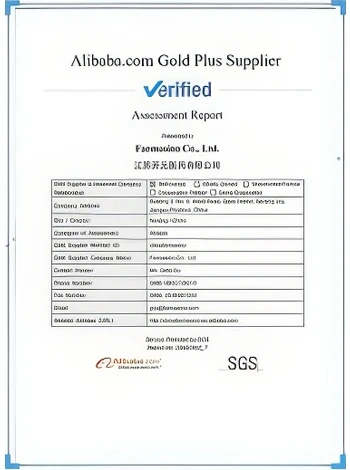



is calcium ammonium nitrate dangerous
Is Calcium Ammonium Nitrate Dangerous?
Calcium ammonium nitrate (CAN), a widely used fertilizer, has become a subject of interest and concern regarding its safety and potential hazards. Understanding its chemical composition, applications, and potential dangers is crucial for both agricultural practices and public safety.
What is Calcium Ammonium Nitrate?
Calcium ammonium nitrate is a compound that consists of calcium, nitrogen, and oxygen. It is often represented by the formula Ca(NO3)2·NH4NO3·10H2O. This fertilizer is typically produced by blending ammonium nitrate with calcium carbonate or calcium hydroxide, which helps to buffer the acidification of soils, thereby promoting better nutrient uptake by plants. The compound offers a substantial amount of nitrogen, which is essential for plant growth, making it popular among farmers and gardeners.
Applications in Agriculture
CAN is primarily used in agriculture as a nitrogen fertilizer due to its high solubility and effectiveness. It is particularly favored for its ability to provide a balanced supply of ammonium and nitrate forms of nitrogen. Farmers utilize it for a variety of crops, including fruits, vegetables, and grains. Furthermore, CAN improves soil structure and increases the availability of other nutrients, enhancing overall crop yields.
Potential Risks and Dangers
While calcium ammonium nitrate is indeed beneficial for agricultural use, it is not without its dangers. One of the primary risks associated with CAN is its potential for explosion, especially when stored improperly. The ammonium nitrate component can be hygroscopic, meaning it can absorb moisture from the air. This can lead to the formation of hotspots in storage facilities, increasing the risk of accidental ignition or explosion in certain conditions, particularly in the presence of combustible material.
In the past, there have been catastrophic incidents related to ammonium nitrate, most notably the explosion in the port of Beirut in August 2020
. This event raised alarms regarding the handling and storage of such fertilizers worldwide, pushing regulatory bodies to reconsider safety protocols, particularly for large stockpiles.Another concern is environmental. If calcium ammonium nitrate is applied excessively, it can lead to soil and water pollution. Nitrogen runoff from agricultural lands can contaminate groundwater and surface water bodies, leading to nutrient pollution and the proliferation of harmful algal blooms, which disrupt aquatic ecosystems and water quality.
is calcium ammonium nitrate dangerous

Handling and Safety Measures
To mitigate the risks associated with calcium ammonium nitrate, it is essential for users, especially farmers and agricultural workers, to adhere to safety guidelines during handling and storage. Here are some key recommendations
1. Storage Conditions CAN should be stored in cool, dry, and well-ventilated areas away from flammable materials. Containers must be tightly sealed to prevent moisture absorption.
2. Quantity Management Users should avoid over-purchasing and stockpiling CAN beyond immediate agricultural needs to reduce risks associated with large accumulations.
3. Education and Training Farmers and workers should receive proper training on the safe handling and application of fertilizers, including the potential risks involved.
4. Environmental Monitoring Regular testing of local water sources and soil can help detect excess nitrogen levels early and initiate corrective actions before significant environmental harm occurs.
5. Regulatory Compliance It is vital for agricultural enterprises to be aware of and comply with local regulations regarding the storage and application of fertilizers like CAN to ensure safety and environmental protection.
Conclusion
Calcium ammonium nitrate, while an effective fertilizer and essential for agricultural productivity, poses several potential risks, particularly regarding safety and environmental impact. By understanding these dangers and implementing proper handling and storage practices, as well as adhering to regulatory guidelines, the agricultural sector can harness the benefits of CAN while minimizing its risks. As with any chemical substance, informed and responsible use is key to ensuring safety for both people and the environment.
-
Why Sodium Persulfate Is Everywhere NowNewsJul.07,2025
-
Why Polyacrylamide Is in High DemandNewsJul.07,2025
-
Understanding Paint Chemicals and Their ApplicationsNewsJul.07,2025
-
Smart Use Of Mining ChemicalsNewsJul.07,2025
-
Practical Uses of Potassium MonopersulfateNewsJul.07,2025
-
Agrochemicals In Real FarmingNewsJul.07,2025
-
Sodium Chlorite Hot UsesNewsJul.01,2025










